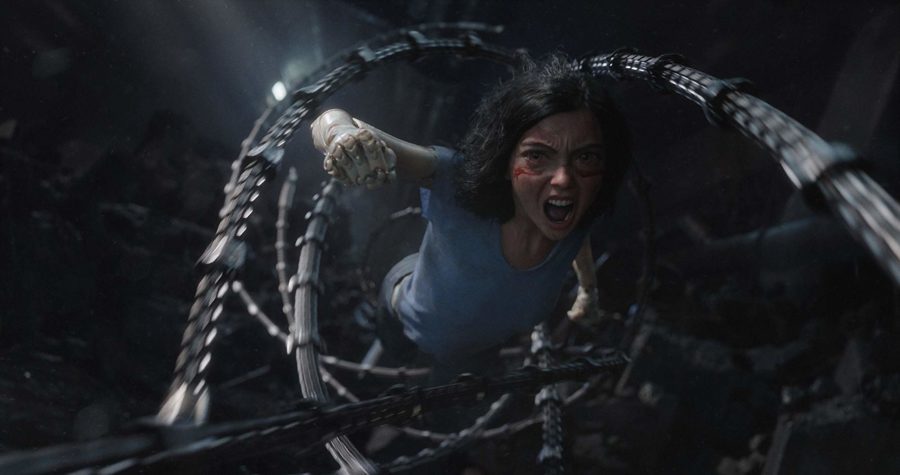In a visual experience that seems pulled straight from the pages of a manga, “Alita: Battle Angel” creates a rich and tangible world, but fails to craft a story that can fully match.
When a cybernetic warrior from a forgotten age before the fall of Earth is discovered among the mountains of trash from the last remaining floating city, Zalem, Alita (Rosa Salazar) must regain her memories while discovering what life is like in the civilization beneath Zalem, Iron City.
Right away, the immense detail and scope of the set design from the artists at WETA, the artists behind the “Hobbit” trilogy, the new “Planet of the Apes” trilogy and Alita’s writer/producer James Cameron’s “Avatar,” is stunning.
Alita and the rest of the completely CGI characters almost always feel as if they are really on those sets with the real actors, not only in performance but texturally.
The CGI and performance capture of Alita and the other cyborgs, and the physical props create a unified world that is woven together through these effects, but what is truly impressive and innovative is the lighting.
Whether they are in an bathed in the orange light of a sunset or in the bright halogen lights of a race track or in a dark and seedy bar, the hues of color and the drop off from shadows allow the effects to push past the uncanny valley.
Unlike his previous technological epic, Cameron wrote “Alita” years before and shelved the project due to the limitations at the time, this time choosing the Austin-based, grindhouse director Robert Rodriguez to direct.
While Cameron and Rodriguez succeed in creating a mostly live-action manga or anime, the film never really rises above the genre it’s based on.
Instead, the film’s plot doesn’t follow a more traditional act structure that has one feeling like this film is just the first half of a much larger story, similar to “Avatar,” while never really have a fully satisfying ending.
The disjointed plot seems to seep into most of the actor’s performances as well. Actors Jennifer Connelly, Jackie Earle Haley, and even recent Oscar award winner Mahershala Ali, all individually give campy or solid performances, but they never feel like those characters should exist in the same world together.
There are a few exceptions, mainly when those characters interact with our heroine or her surrogate father/mentor Dr. Dyson Ido, played by Christoph Waltz.
Both the action set pieces between Alita and her horde of cybernetic opponents and the heartfelt performance by Waltz, especially in the opening scenes with Salazar, provides enough entertainment and emotional investment to support the film’s weaker elements.
Verdict: 7 / 10
Despite impressive animation and production design that creates a world that feels old and lived-in, “Alita: Battle Angel” could fail to capture the audience’s attention and heart. The film feels too generic to have the cultural staying power like co-writer and producer James Cameron saw with “Avatar.” At the same time, the thirteen-year-old boy in me fully embraces what director Robert Rodriguez is going







